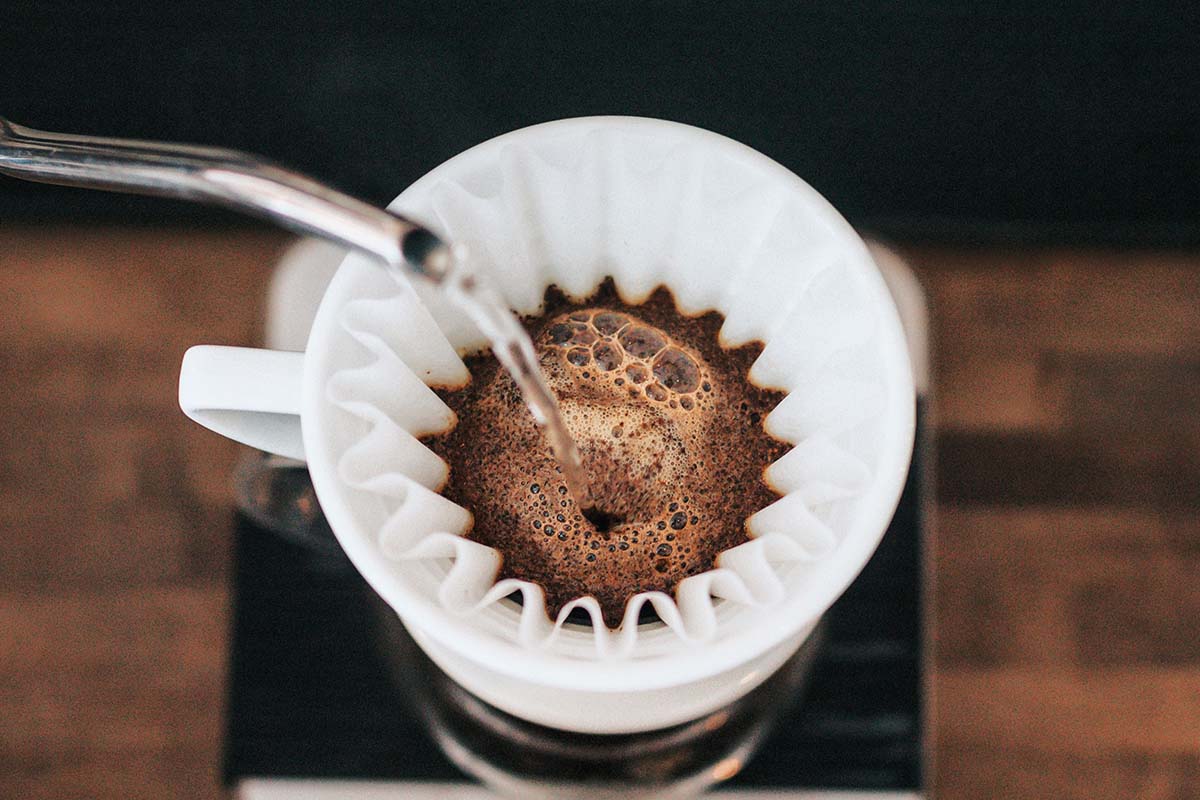
Filtered coffee is any coffee that is prepared through some type of filter so that the grounds do not end up in the drink. Those who enjoy a cup of coffee without grounds can choose anything from drip, espresso shots, Indian filter coffee, and more. Filtered coffee was not before the early 1800s, centuries after the beverage became a popular staple in Arabia, around 1000 AD. Until then, the coffee had been made with the grounds still in the water. Although the basic principles behind filtering coffee have not changed much, there are many different devices and methods for filtering, each of which results in variations in flavor and richness.
A cup of filtered black coffee.
The filtered coffee movement began around 1780 with the invention of the Mr. Biggin coffee makers. Mr. Biggin’s pots were shaped like a tall kettle, with room for a cloth filter and a spout at the bottom. By the early 1800s, the inventors of coffee had greatly improved Mr. Biggin’s shortcomings, offering disposable cloth filters to prevent breakdown that occurred with repeated use of a single filter. Over time, fabric filters were completely replaced by paper filters.
Before the filters, coffee was made with the grounds still in the water.
Even with the improvements, these filter machines weren’t perfect for keeping grounds out of coffee, hence the invention of the sous vide coffee maker. Vacuum coffee makers have two large containers to hold water, like two pots stacked on top of each other. The water is placed in the lower chamber where it is heated to a boil. The thermal pressure forces the water into the upper chamber, which contains coffee grounds. Once the heat subsides, the water naturally seeps into the lower chamber, resulting in a rich, bean-free cup of coffee.
Espresso is a strong filtered coffee traditionally served in small demitasse-style cups.
Coffee makers took the technology behind vacuum coffee makers and put it in a much less bulky device. A coffee pot is an upright pot with a spout at the top. Water is placed in the bottom of the pot. When the coffeemaker is heated, either by the stove or through an electrical outlet, the water is pushed into a brewing chamber that contains coffee grounds. The resulting coffee flows back to the bottom, while the grounds remain on top. Many coffee makers have a viewing window so the user can judge the strength and consistency of the coffee.
The French press soon followed, featuring a cylindrical container with a plunger inside. The coffee and water are combined in the container and heated. When the plunger is depressed, water can escape from the side of the container, while the grounds are trapped at the bottom. This method is one of the simplest yet effective ways to make filtered coffee. While bulky vacuum brewers have been relegated to collectibles, the French press is still used by some who prefer it for the easy control it offers the user.
One of the most popular methods of making filtered coffee today is with an automatic drip coffee maker. The electricity heats the water, which is then poured through the coffee grounds placed in a filter; the water absorbs the coffee when it is filtered in a pot. If the filter is set up correctly and holds the grounds properly, there should be no grounds getting into the pot. Automatic drip coffee makers have become so popular since their introduction in the 1970s that they have become a common kitchen appliance.
Over time, filtered espresso has become almost as popular and accessible as drip coffee. Espresso is made with coffee beans finer than drip. The grounds are packed into a small chamber, through which pressurized hot water is forced. Espresso is usually much darker and bolder than most drip coffees. As a result, it is not made in the same quantities as the drip, but in shots. Espresso shots can be consumed in many ways. Some drink it on its own, some with a mixture of steamed milk, and others with water.
In India, many like to drink Indian filter coffee, check Indian filter coffee recipe, which uses a mixture of chicory and dark coffee beans. This style of coffee is filtered with a set of glasses. The coffee and chicory pack well in one of the glasses, while the other glass is placed on top before adding hot water. The water mixes with the coffee and chicory, and slowly froths and drips to separate the drink from the grounds. Chicory helps coffee retain its boldness and strength.
